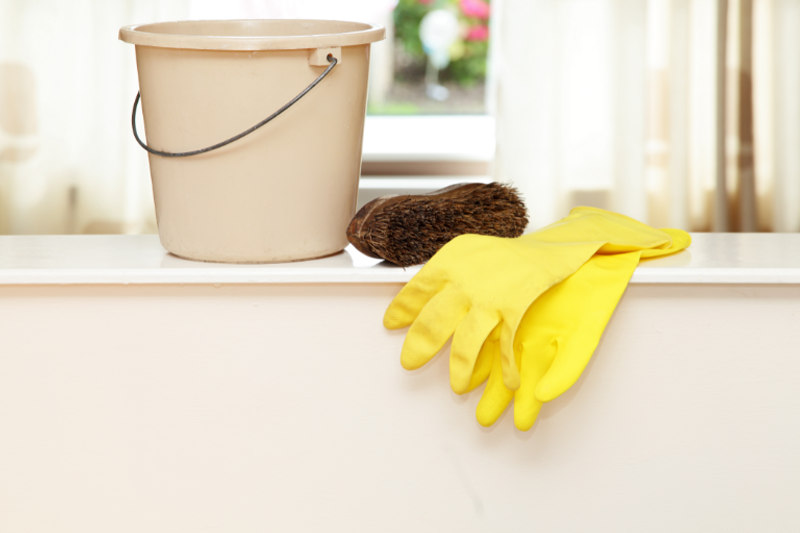The floor of your garage is exposed to intense corrosion and deterioration due to road salt, oils, and other auto fluids. Sealing your garage floor reduces dust and makes cleaning and sweeping easier. A clear acrylic concrete sealer protects the concrete from damage and stains. Also, the same sealers can be used on concrete walks and driveways or as a primer under acrylic or polyurethane floor paints. You should take care when and where you apply a sealer because they cannot be applied over paint or other coatings.
In order to do the sealing yourself, you need several materials and tools: protective clothing, neoprene rubber gloves, goggles, a stiff brush and a bucket, a paintbrush, a cartridge-style respirator with organic vapor and small-particle filters, a paint roller with extension handle and tray, medium nap roller cover, a concrete degreaser and of course some concrete sealer. Usually, ½ gallon of sealer is used for approximately 100 square feet.
Before sealing you have to clean the floor because it has to be free of dirt, grease, and oil. To do this you should use a stiff scrub brush to apply the cleaner and concrete degreaser according to the instructions. Allow the solution to lay on the floor for 15 to 20 minutes more for stubborn stains after scrubbing. After that, you should rinse thoroughly with clear water. You may need several applications. Many concrete sealers contain hazardous chemicals that may be harmful to skin and eyes and the vapors are not safe to breathe but the vast majority are acrylic. The best way to avoid damage to your skin, eyes, and lungs is to wear protective equipment made of neoprene rubber gloves, goggles, and a respirator with both organic-vapor and solid-particle filter cartridges.
During the process of sealing the floor, you should continuously ventilate the garage by opening all doors and windows and also using a fan would be a great idea.
After cleaning and drying the concrete, the sealer has to be applied. The sealer should be tested in an inconspicuous area before applying. Some uneven density in the concrete may result in a light/dark appearance that may be objectionable. By using the medium-nap paint roller with an extension handle is the easiest way to apply the sealer. Start in a rear corner continuing to work your way out of the garage. Before doing anything else you should allow the sealer to dry as indicated on the sealer bottle, usually for a few hours.
For a driveway, the procedure is essentially the same but it would be quicker to use a garden sprayer to apply the sealer to a large driveway. You should act with caution not to overspray on other materials due to the high risk of staining.
Want to discuss more? Contact our remodeling consultant now.


